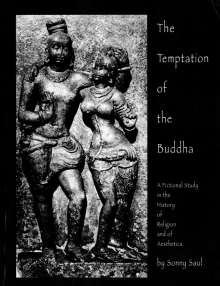The Temptation of the Buddha: A Fictional Study in the History of Religion and of Aesthetics 

by Sonny Saul
Genre: Other2
Published: 2013
View: 1167
Read OnlineRead The Temptation of the Buddha: A Fictional Study in the History of Religion and of Aesthetics Storyline:
The history of the Buddha and his teachings is not static, but is meant to be made fluid through the practice and of his teachings and values. In The Temptation of the Buddha: A Fictional Study in the History of Religion and of Aesthetics, Sonny Saul reinterprets the ancient Vedas to fully transmit the profound, aesthetic fluidity and meaning of the ancient narrative.The history of the Buddha and his teachings is not static, but is meant to be made fluid through the practice and of his teachings and values. In The Temptation of the Buddha: A Fictional Study in the History of Religion and of Aesthetics Sonny Saul reinterprets the ancient Vedas to fully transmit the profound, aesthetic fluidity and meaning of the ancient narrative.Saul, “Over a broad portion of the world, at a time during which this story takes place, the source of ritual began to change. Old rituals began to be reinterpreted and man began, more and more, to create his own rituals.” It is in this spirit of reinterpretation and rediscovery that Saul creates a visual, lyrical, and theatrical view of the Buddha’s life and his relationship with the three goddesses, Desire, Regret, and Fulfillment, and their wise and clever father, Kama Mara, originally sent to tempt him.With his description of the legend of Gotama Siddhartha, Saul brings alive the image of Buddha as the ascetic figure not yet enlightened, and shapes the reader’s sense of the Buddha’s inner dialogue, “sitting there under the tree … cross-legged, in meditative posture ... absorbed in the bliss of inner experience.”Saul portrays the Buddha’s fictional conversations with the goddesses and Kama Mara as playful, warm, and literary, which in turn successfully reveals the true role of each character in shaping the Buddha’s spiritual, physical, and philosophical journey, and allows the reader to engage in an intimate dialogue with the Buddha as friend, protagonist, and teacher.Saul, “I have imagined, for the first time, Kama Mara’s daughters as individuals, each with a role to play in the education of Gotama Siddhartha, who became the Buddha. The lore of Buddhism is rich in ‘conversations.’ Zen Buddhism especially takes up this genre to great effect. Authenticity is not of concern. Somewhat like collective dreaming, or as we have suggested, collective novel writing, conversations have suggested themselves and remained in literature. I wish to add just a few.”The reader is made to feel that they are living in the time of the Buddha in Aryavarta, “Daytime winds blow dust, giving the sky a brassy color. Concentration becomes difficult. Intensive work is not a possibility. Midday hours are times of peace and quiet, as most people seek refuge from the sun. Virtually everyone sleeps out of doors.”Through his use of “program notes” Saul guides the reader through “the imagining of the scene, setting, character, and story,” and encourages readers to draw parallels between the vivid history of the Buddha and art in all its forms. Readers who wish to explore the relationship between religion, aesthetics, literature, historical truth, experience, and individual spirituality will benefit greatly from the ideas outlined by Saul in this volume.The book features quotes from the writings of Leo Tolstoy, William Blake, Frederick Nietzsche, Virginia Woolf, Shakespeare, Herman Melville, de Cervantes, Gore Vidal, Aldous Huxley, Marcel Proust, Henry Miller, and Dante, references to the music of Miles Davis, Mozart, and Ludwig van Beethoven, commentary on the philosophies of Plato, Socrates, and Karl Marx, and an aesthetic analysis the art of Vincent Van Gogh, Renoir, Goya, and Giorgione.Pages of The Temptation of the Buddha: A Fictional Study in the History of Religion and of Aesthetics :